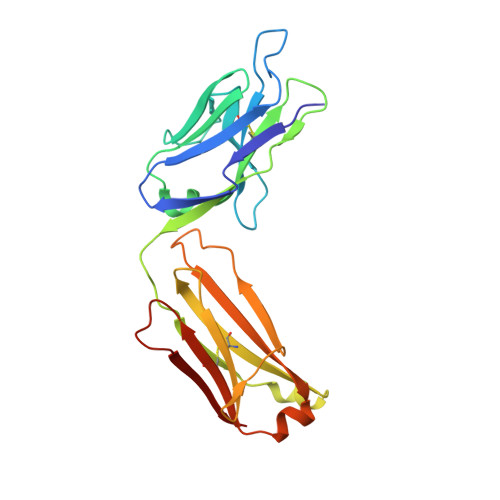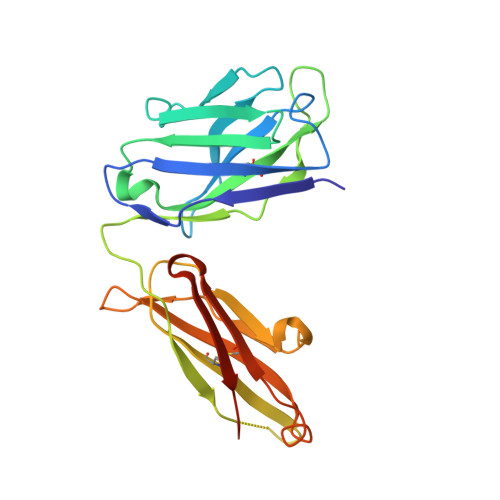An aspartate and a water molecule mediate efficient acid-base catalysis in a tailored antibody pocket.
Debler, E.W., Muller, R., Hilvert, D., Wilson, I.A.(2009) Proc Natl Acad Sci U S A 106: 18539-18544
- PubMed: 19846764
- DOI: https://doi.org/10.1073/pnas.0902700106
- Primary Citation of Related Structures:
3FO0, 3FO1, 3FO2 - PubMed Abstract:
Design of catalysts featuring multiple functional groups is a desirable, yet formidable goal. Antibody 13G5, which accelerates the cleavage of unactivated benzisoxazoles, is one of few artificial enzymes that harness an acid and a base to achieve efficient proton transfer. X-ray structures of the Fab-hapten complexes of wild-type 13G5 and active-site variants now afford detailed insights into its mechanism. The parent antibody preorganizes Asp(H35) and Glu(L34) to abstract a proton from substrate and to orient a water molecule for leaving group stabilization, respectively. Remodeling the environment of the hydrogen bond donor with a compensatory network of ordered waters, as seen in the Glu(L34) to alanine mutant, leads to an impressive 10(9)-fold rate acceleration over the nonenzymatic reaction with acetate, illustrating the utility of buried water molecules in bifunctional catalysis. Generalization of these design principles may aid in creation of catalysts for other important chemical transformations.
Organizational Affiliation:
Department of Molecular Biology and Skaggs Institute for Chemical Biology, The Scripps Research Institute, 10550 North Torrey Pines Road, La Jolla, CA 92037, USA.
















